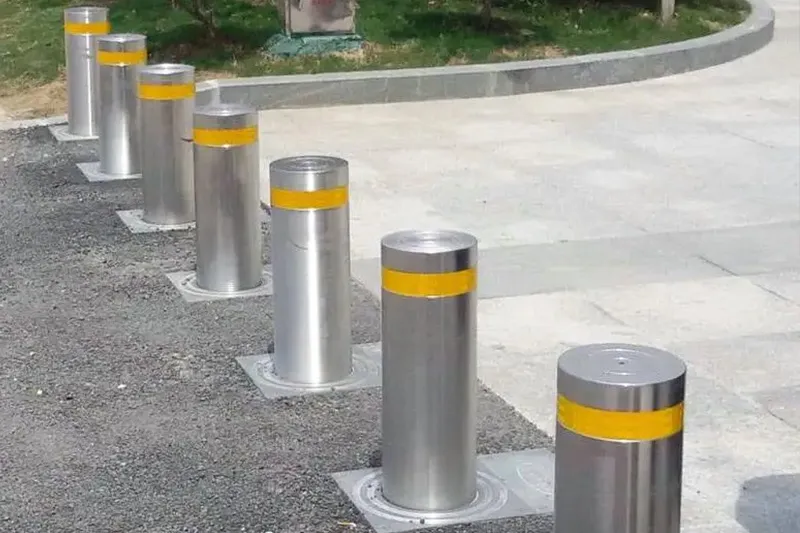Bollards, those short and sturdy vertical posts we often encounter in urban settings, play an indispensable role in ensuring pedestrian safety, controlling vehicular traffic, and demarcating spaces. Among the variety of bollards available, removable bollards stand out due to their unique capability to provide temporary or adjustable access control. These are specially designed to be easily installed and removed as needed, allowing for flexibility in managing space and traffic flow. As cities and spaces changed, so has the design of these bollards. No longer just utilitarian fixtures, they have transformed into pieces of art, reflecting the aesthetic aspirations of modern urban areas while retaining their core functional attributes.
Table of Contents
The Rise of Aesthetic Appreciation
Over the years, as urban spaces became more sophisticated and people’s interactions with their environments grew, there was a notable shift in the perception of infrastructure elements like removable bollards. Initially installed purely for their utility in safety and boundary demarcation, bollards began to be seen not just as functional assets, but also as potential canvases for artistic expression. City planners, architects, and designers recognized the opportunity to integrate aesthetics into these once-plain objects, enhancing the visual appeal of streetscapes and public spaces.
This growing appreciation for the aesthetic potential of removable bollards was fueled by several factors. The global movement towards beautifying urban environments, coupled with the desire to create distinctive landmarks and community identifiers, played a significant role. As cities began to compete with each other to attract tourists, businesses, and residents, every element of urban design, including bollards, became an avenue to showcase uniqueness and creativity. The result was a surge in artistically designed bollards that not only served their primary function but also added character and charm to city streets, parks, and plazas.
Materials and Finishes
Removable bollards have seen a vast array of materials used in their construction over the years. Traditionally, materials such as cast iron, steel, and concrete have been the primary choices, prized for their durability and strength. These materials ensured that the removable bollards could withstand both the environmental challenges of outdoor placement and the potential impact from vehicles. As technology advanced and design preferences changed, newer materials like stainless steel, bronze, and even certain recycled materials have made their way into bollard construction. These offer not just strength and resilience but also provide a sleeker and often more contemporary appearance.
Finishes play a major role in enhancing the aesthetic and protective qualities of removable bollards. Powder-coating, for instance, offers a wide range of colors while also adding an extra layer of protection against corrosion. Painting allows for customized designs, making bollards more visually appealing or better integrated into specific themes of an area. Patinas, especially on materials like bronze or copper, give bollards a naturally aged look, adding depth and character over time.
Design Elements and Inspiration
Removable bollards, though functional in nature, have transcended their primary purpose to become vessels of artistic expression. Their design elements are often inspired by various aspects of culture, history, and the environment. Geometrical designs, for instance, offer a simplistic yet effective aesthetic, often making bollards seamlessly integrate into contemporary urban spaces. On the other hand, some bollards carry patterns or motifs reminiscent of specific historical periods, paying homage to a city’s heritage or echoing architectural landmarks nearby.
Removable bollards have also been fashioned after themes ranging from flora and fauna to local legends and symbols. In coastal areas, for example, bollards might be sculpted to resemble marine creatures or nautical tools. In historic districts, designs might be inspired by significant events, figures, or local folklore. These themed designs not only enhance the visual appeal of spaces but also narrate stories.
Lighting and Interactive Features
One of the most notable advancements in bollard design has been the integration of lighting. LED-illuminated bollards, for instance, serve a dual purpose: they increase visibility for safety during nighttime and accentuate the beauty of spaces with their subtle or vibrant glows. Strategically lit bollards can transform pedestrian pathways, plazas, or parks into enchanting scenery.
Interactive features have also touched removable bollards. With the integration of sensors, some modern bollards can respond to external stimuli, like changing colors when touched or light up patterns when approached. Others may incorporate QR codes or augmented reality markers, offering historical insights, directions, or interactive experiences for pedestrians.
Custom Designs for Specific Locales
One of the most intriguing aspects of removable bollard design is the ability to tailor them specifically to resonate with the essence of a particular locale. Custom designs offer an opportunity to imbue a piece of the local culture, history, or ethos into these functional structures. In cities rich with history, removable bollards might bear symbols or motifs of ancient civilizations, iconic landmarks, or events that shaped the locale’s narrative. For instance, a bollard in a city with a maritime history might incorporate nautical symbols, while one in an artistic hub could reflect local artistic styles or famous artworks.
In places known for unique natural land or indigenous flora and fauna, removable bollards can be designed to mirror these elements, serving as a reminder of the locale’s natural beauty and ecological significance. By taking inspiration from the surrounding environment, these bollards not only enhance aesthetic appeal but also foster a deeper connection between residents and visitors with the space they inhabit or explore.
Removable bollards, once merely functional assets, have metamorphosed into symbols of art, culture, and technology in our urban communities. Their change from simple posts to designed structures shows the growing intersection of functionality and aesthetics in city planning.







